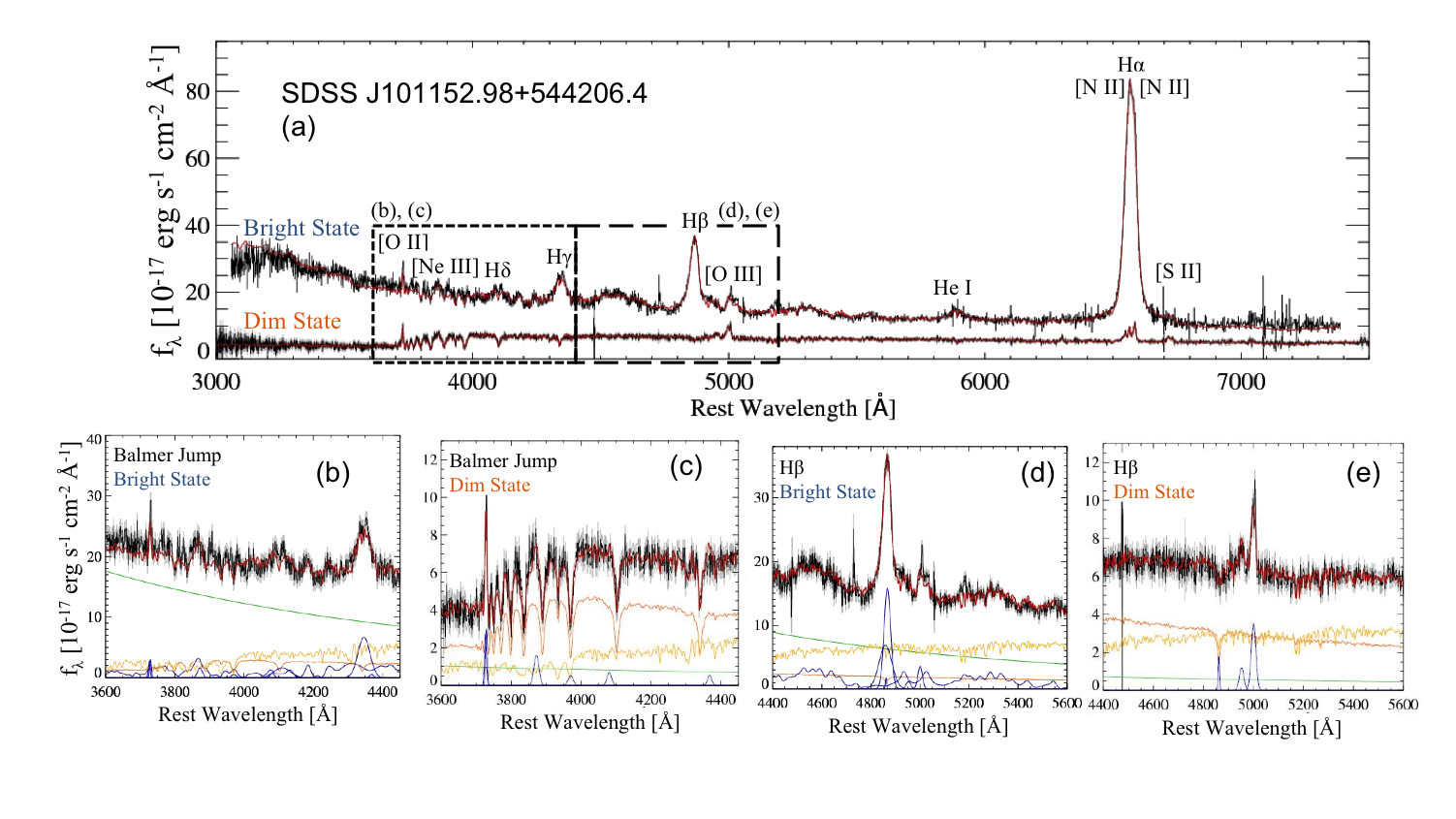Time-Domain Spectroscopic Survey (TDSS)
The Time Domain Spectroscopic Survey (TDSS), a subprogram of eBOSS in SDSS-IV, is providing the first large-scale, systematic optical follow-up spectroscopic survey to characterize photometric variables. The completion of eBOSS observations correspondingly marks the completion of TDSS observations, as TDSS also relies on the BOSS spectrographs, using a small fraction (about 5%) of the optical fibers piggybacking on eBOSS plates. TDSS observations thus effectively also concluded with eBOSS data collection in February of 2019, and with the full TDSS spectroscopic data included in DR16.
The target selection of TDSS is described on the targetting page. There are three main components of TDSS, each with data collection essentially complete in DR16:
(1) The primary TDSS spectroscopic targets are selected from their variability within Pan-STARRS1 (PS1) multi-epoch imaging photometry, and/or from longer-term photometric variability between PS1 and SDSS imaging data (e.g., see Morganson et al. 2015). TDSS single epoch spectroscopy (SES; Ruan et al. 2016) of these targets establishes the nature (e.g., variable star vs. variable quasar, and subclass, etc) of the photometric variable, and in turn often then suggests the character of the underlying variability (e.g., pulsating RR Lyrae vs. flaring late-type star vs. cataclysmic variable, etc). Accounting for the relevant SDSS-IV (and a pilot program, known as SEQUELS, in SDSS-III) observations, new optical spectra have been collected for more than 108,000 such TDSS photometric variables through DR16. Also accounting for spectra of similar additional TDSS variables fortuitously already having spectra within the earlier SDSS archives, of order one-third of the TDSS variables are spectroscopically classified as variable stars, and most of the other two-thirds are variable quasars.
(2) Another 6,500 TDSS spectroscopic fibers are allotted to repeat spectra of known star and quasar subclasses of unusual and special interest, anticipated or suspected to exhibit spectroscopic variability in few expoch spectroscopy (FES; e.g., see MacLeod et al. 2018). A recent specific example of the latter, are TDSS spectra of nearly 250 dwarf Carbon stars that provide strong evidence of statistical radial velocity variations indicative of subclass binarity (e.g., Roulston et al. 2019).
(3) The more recently initiated TDSS Repeat Quasar Spectroscopy (RQS; also see MacLeod et al. 2018) program obtains multi-epoch spectra for 16,500 known quasars, sampling across a broad range of properties including redshift, luminosity, and quasar subclass type (i.e., with a larger sample size, but also a greater homogeneity and less a priori bias to specific quasar subclasses than the TDSS FES programs), all of which have at least one earlier epoch of SDSS spectroscopy already available in the SDSS archive. The RQS program especially addresses quasar spectral variability on multi-year timescales, and in addition to its own potential for new discoveries of phenomena such as changing-look quasars or broad absorption line (BAL) variability and others, also provides a valuable (and timely) resource for planning of yet larger scale multi-epoch quasar repeat spectral observations anticipated for the future program Black Hole Mapper program in SDSS-V.
In total, TDSS has selected or co-selected (in the latter case, often with eBOSS quasar candidate selections) more than 130,000 spectra in SDSS-IV that probe spectroscopy in the time-domain. All such quality spectra are available in DR16.
Some TDSS People
- Principal Investigators
- Paul Green (SAO/CfA) and Scott Anderson (UW)
- Recent Targeting Coordinator
- Chelsea MacLeod (formerly SAO/CfA)
- Initial Targeting Coordinator
- Eric Morganson (formerly SAO/CfA; recently UIUC)
- Initial Data Coordinator
- John Ruan (formerly UW; recently McGill)



